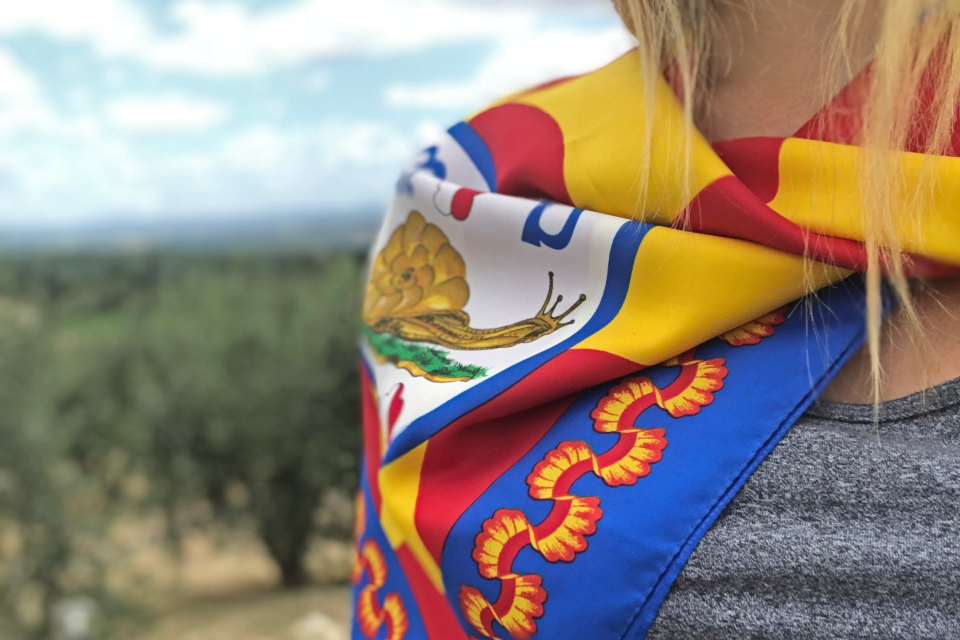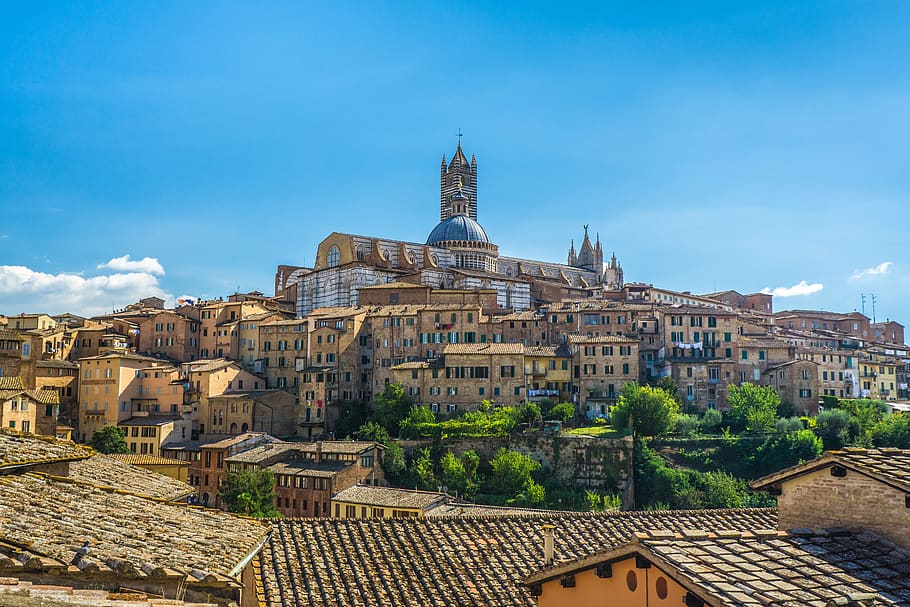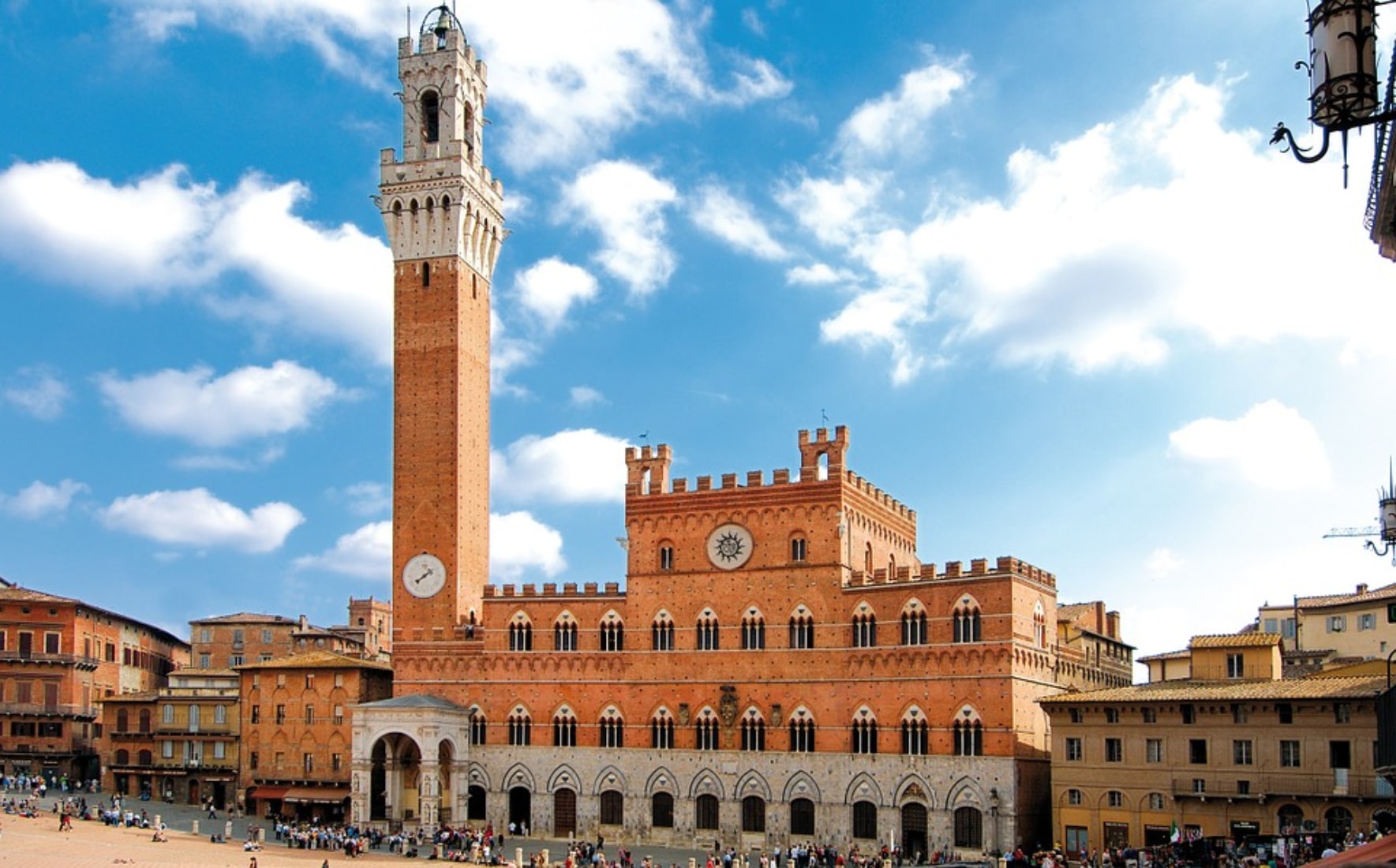Il Palio: le Contrade
The history of a tradition
As early as the 11th century, the population was in the habit of gathering at churches and town chapels to discuss topics of common interest.
This habit in Siena led to the formation of districts that took the name of Contrade. These represented a territorial body with its own legal personality, administrative competencies and the capacity to own property and regulate the rules of common life of the population within its boundaries. The Compagnia on the other hand, was but a section of the general military organisation of the municipality, without legal capacity or the power of deliberation.
Today, the Contrade have lost most of their original functions, yet they seem to be the true continuation of the old ones, having preserved their constitution almost unchanged. Instead, the Compagnie are now represented by the 'Comparse', who only have a limited function at Palio and representation events.
Between the 15th and 16th centuries, the Contrade completed their mythological bestiary from which they took their coats of arms. In the absence of documents and records in this regard, it can be assumed that the Contrade chose the animal to be represented by drawing from the repertoire of festive heraldry in vogue at the time, taking cues and symbols from the coats of arms of sovereigns and noble families, companies of fortune, arts and crafts, towns and cities. By the mid-16th century, the symbols of the Contrade were already the current ones, while the colours underwent further variations over time.
Of the many Contrade that originally existed, the number and boundaries of today's Contrade were finally established in 1729.
Contrade such as il Leone, la Vipera, il Gallo, la Quercia, l'Orso e la Spadaforte. Even today, their knights parade in the historical procession with their coats of arms lowered, testifying to the ancient activities that no longer exist.
Thanks to the distinctly delineated borders, the Contrade were able to adopt their own ordinances that regulated the common living within them.
Historically, most of the Contrade celebrated feasts and held their meetings in the parish church or in the oratory of some lay company, often finding themselves in conflict with the parish priests or brethren of the Compagnie. Meanwhile, those Contrade that had no seats of their own came forward to ask to be allowed to take possession of certain parishes and confraternities that were suspended by a measure taken by Grand Duke Peter Leopold I of Lorraine.
The magnificent venues that are still the pride of every Contrada today therefore owe their survival to the Grand Duke through their renewed function as aggregating places rich in memories, furnishings and objets d'art.
The Seventeen Contrade
TERZO DI CITTÀ
Aquila, Chiocciola, Onda, Pantera, Selva, Tartuca
TERZO DI SAN MARTINO
Civetta, Leocorno, Nicchio, Torre, Valdimontone
TERZO DI CAMOLLIA
Bruco, Drago, Giraffa, Istrice, Lupa, Oca
Discover Chianti with its castles...
The myth of Siena
The myth of Siena The creation of the myth of Siena and the PalioThe common image we have of Siena is that of a precious Gothic casket, coherent and organic, characterized by the typical brick facades, ogival arches and paintings with a gold background. The creation...
The constitution of the city
The constitution of the city Between myth and truthThe best known myth about the origins of Siena dates back to Roman times when, according to legend, the young Senio, son of Remo, together with his brother Ascanio, settled here and founded a castle to escape the...



